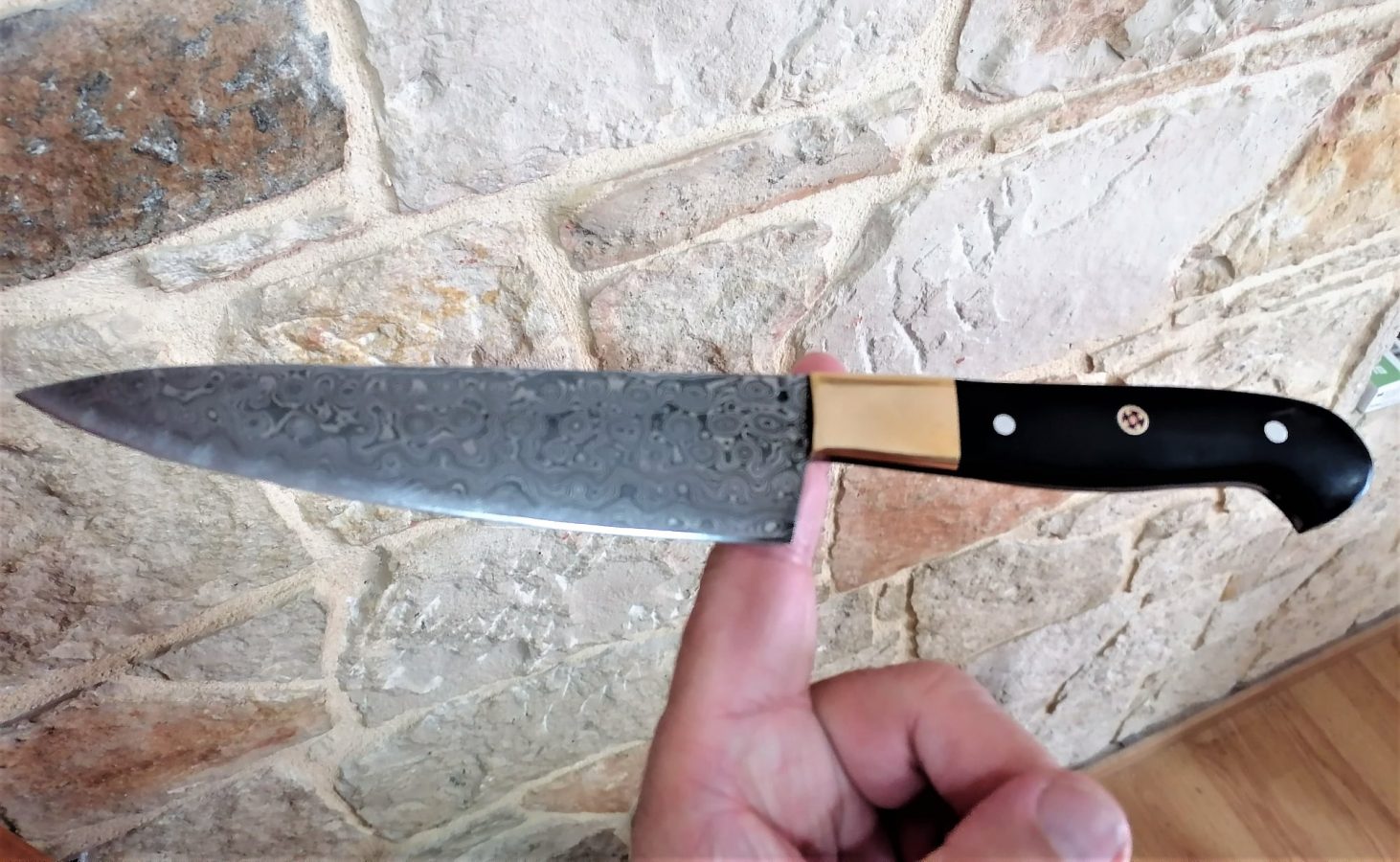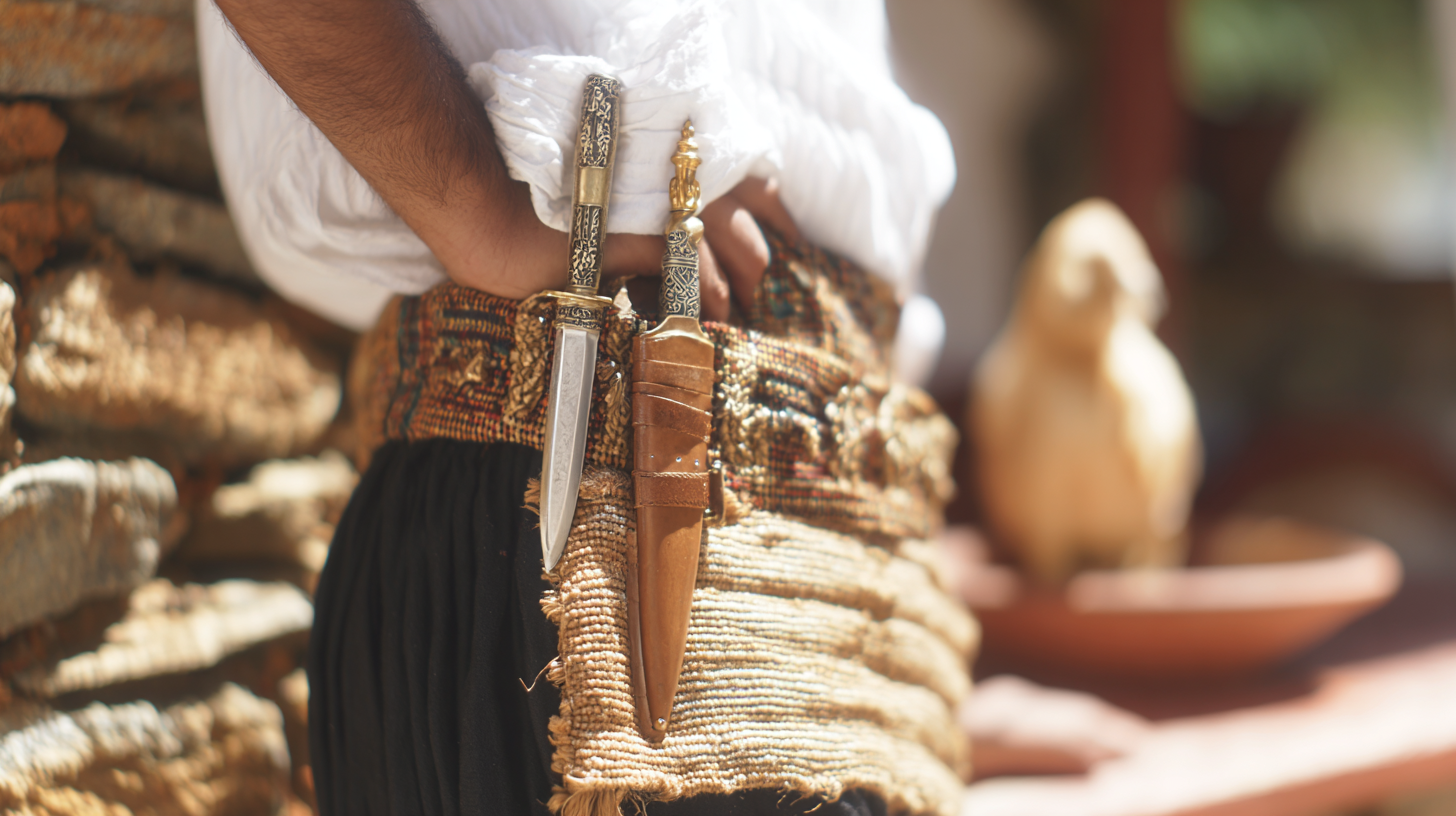“The knife is the most permanent, the most immortal, the most ingenious of all man’s creations.” — Yevgeny Zamyatin
If Zamyatin had strolled through Chania’s alleys, he would have seen his words embodied in the Cretan knife. Forged in fire, hammered by stubborn hands, and inscribed with mantinades that slice into the heart, the knife has become the island’s most enduring symbol.
Crete has been crossed and conquered by Mycenaeans, Romans, Venetians, Ottomans, and Nazis. Through each era, one thing remained at a Cretan’s side — a blade that was both weapon and poem.
A Boy and the Anvil Stauros Peterakis
At just eight years old, Stauros Peterakis wandered into the workshop of Nikos Skoutridakis. Sparks danced, hammers rang, steel glowed white-hot. Something ancient stirred in him. That day set him on a path to become Crete’s most celebrated knifemaker.
Born in 1962, Peterakis grew up in Chania, helping in his father’s café. His route to mastery was winding, filled with odd jobs, but the forge kept calling. Decades later, he is recognized as a guardian of tradition. In his hands, the riddle of steel is not forgotten.
Sifaka Street the Beating Heart of Knifemaking
Inside Old Chania Town, on Sifaka Street in the Splantzia quarter, the tradition still breathes. Workshops here are tiny, smoky, and alive with the scent of burning coal. Craftsmen in leather aprons coax art from iron, hammering not just metal but memory.
Younger generations rarely take up the hammer. The work is long and unglamorous, and masters grow old. Each new blade forged in Sifaka Street feels both like a triumph and a question — how much longer will this continue?
From Revolution to Resistance
The Cretan knife’s identity is forged in rebellion. In the 14th century, during the Revolution of the Psaromiligi family against Venetian rule, blades became banners of defiance. Later, under the Ottomans, carrying a knife was a matter of both pride and survival.
By World War II, Cretans once again drew blades, not against Venetians or Turks but against Axis invaders. The knives of that era, some rough and hastily made, now rest in museum cases, scarred by use but gleaming with dignity.

Anatomy of a Cretan Knife
The process of crafting a knife is as layered as a mantinada.
- Forging: Steel is heated until glowing, then hammered into its curved, leaf-like shape.
- Handle: Made from horn, bone, or olive wood. In earlier centuries, even ivory was used.
- Silverwork: Plates engraved with flowers, boats, or animals often decorate the junction between blade and handle.
- Assembly: Handles and blades are joined with ancient methods, including lead gluing.
- Scabbards: Ornate ceremonial versions feature engraved silver or brass; everyday knives use leather.
“The gods forgot the secret of steel and left it on the battlefield. We who found it are just men. Not gods. Not giants. Just men.” — Conan the Barbarian
On Crete, that secret was never entirely lost.
Mantinades: When Blades Recite Poetry
Etched verses are the soul of the Cretan knife. These mantinades transform the blade into a storyteller.
- Η αγάπη κόβει πιο βαθειά κι από μαχαίρι Κρήτης.
(Love cuts deeper than a Cretan knife.) - Όπου κι αν πάω στην ξενιτιά, πάντα εσένα συλλογίζομαι.
(Wherever I go abroad, I always think of you.) - Μη με φοβάσαι για το κακό, μόνο για το δίκιο.
(Fear me not for evil, only for justice.)
A man could slice bread with a knife that whispered poetry. That paradox is Crete itself — fierce and lyrical at once.
Wearing the Blade with Pride
For centuries, the knife was part of the male folk costume of Crete. Worn with black breeches, tall boots, and the long embroidered sash, it was more than an accessory. It was the finishing mark of dignity.
The handle often peeked from the belt, gleaming with horn or silver. Without a knife, a Cretan man was considered improperly dressed.
At weddings and festivals, the knife completed the costume, a symbol of honor rather than danger. Today, folk dancers on stage wear replicas, continuing the tradition under theater lights instead of mountain suns.

The Knife in Ritual and Daily Life
Beyond costume, the knife cut its way into all aspects of life.
- At weddings, it was a gift promising protection.
- At baptisms, a small knife could symbolize responsibility.
- In vendettas, it was both feared and respected, bound by its own code of honor.
Practical use never disappeared. Shepherds used knives for rope, food, or animal care. The line between everyday tool and sacred symbol was always blurred.
From Utility to Souvenir
Markets in Chania and Heraklion today are lined with knives, from simple kitchen blades to decorative pieces in velvet boxes. Tourists buy them engraved with names or short dedications.
Unlike mass souvenirs, the knife carries weight. It says not just “I visited Crete,” but “I touched Crete’s living history.”
The Historical Museum of Crete in Heraklion and the Maritime Museum in Chania house knives that once belonged to shepherds, rebels, and fighters. Some blades are notched by battle, others untouched but engraved with silver flowers. Each one is a time capsule, part steel, part story.
The Future of the Blade
Knifemaking is hard, unprofitable work in an age of screens. Many wonder how long Sifaka Street will still echo with hammer blows. Yet as long as one forge burns, the tradition holds.
Stauros Peterakis knows it cannot last forever, but his knives prove that steel carries memory. As long as they are made, Crete’s story continues in the hiss of fire and the rhythm of mantinades.
The Cretan knife is contradiction made tangible. It has cut bread and enemies, sealed marriages and sworn vendettas. It has been carried by shepherds in the mountains and by dancers on festival stages.
Above all, it has turned steel into poetry. With every mantinada inscribed, the knife continues to speak. And in doing so, it reminds Crete that traditions forged in fire can outlast centuries.
The knife does not just cut through matter. It cuts through time.